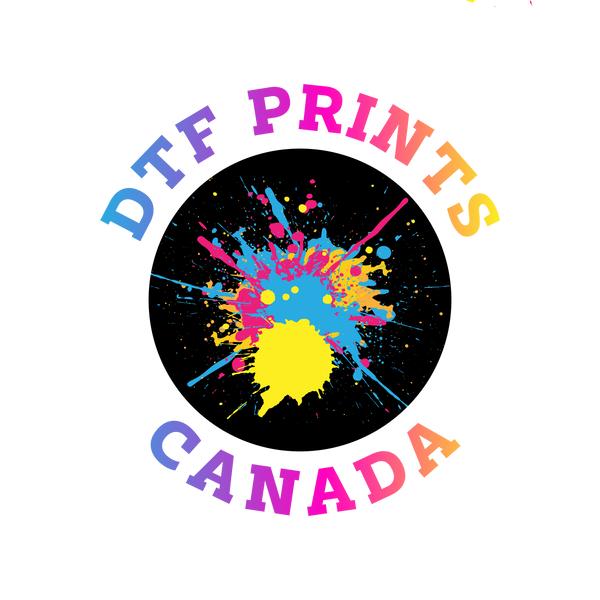Beginner's Guide
![]()
Beginner’s Guide to Printing High-Quality DTF Transfers
DTF transfers are a dependable way to produce bold colours and long-lasting prints. Whether you’re new to the process or fine-tuning your technique, success starts with proper file setup. Taking the time to prepare your artwork correctly helps your transfers press cleanly and look their best.
This guide covers the essential steps for preparing artwork for DTF printing, UV DTF printing, sublimation, and other print methods so your designs come out sharp, accurate, and consistent every time.
Preparing the Highest Quality Prints:
DTF Transfer, UV DTF Transfer, Sublimation, Stickers, Banners, Art Canvas Prints
Before sending artwork to print, make sure your design file is properly set up. A well-prepared file ensures colours remain true, edges are clean, and no details are lost in the transfer process.
If files are not prepared correctly, common issues include:
- Blurry or pixelated images
- Incorrect colour reproduction
- Missing or substituted fonts
- Transparent or hidden layers causing errors
Pro Tip: Always review your file before uploading it for DTF transfer printing. Double-check for transparency, hidden layers, and locked objects that may affect print quality.
1. Choosing the Right File Format For Print

The file format you use can have a major impact on print quality. For DTF transfers, stick with file types that preserve detail and transparency.
Recommended formats for DTF printing:
- PNG: Supports transparency and lossless compression—perfect for detailed designs.
- PDF: Maintains consistent formatting across platforms.
-
JPEG: Acceptable for photos, though compression can reduce quality.
For best results, use PNG or PDF when preparing DTF transfer files.
2. Colour Management for DTF Printing
Colour accuracy is one of the most common challenges in printing. To achieve high-quality DTF transfers, make sure your artwork is set up with the right colour model.
- RGB (Red, Green, Blue) is for digital screens.
- CMYK (Cyan, Magenta, Yellow, Black) is the standard for print.
Always convert your design to CMYK before sending it to print. This ensures your colours look as close to the digital preview as possible.

Caution: Avoid switching back and forth between RGB and CMYK, as this can distort colours. Keep a master file so you can adjust without losing quality.

3. Preparing Images for DTF and UV DTF Printing
Your image setup directly affects how your DTF transfer prints. Pay close attention to resolution, scaling, and special effects.
Resizing for Quality Prints
- Keep resolution at 300 DPI for clear, sharp prints.
- When scaling your artwork, make sure it stays in proportion so the design keeps its original shape.
- Avoid using low-resolution (72 DPI) web images—simply increasing DPI won’t improve quality.
Colour Correction
- Adjust brightness and contrast so designs appear vibrant.
- Use colour profiles or proofing tools to simulate how the print will look.
- Be aware that what you see on-screen may look different once printed.
Do’s & Don’ts for DTF Images
- Use solid colours rather than semi-transparent elements.
- Use halftones for effects like smoke or glow.
- Avoid soft or blurred edges—these don’t transfer well in DTF printing.

Skip soft or blurred edges for your designs
Designs with soft edges don’t work for direct-to-film prints because the small ink dots that create the effect don’t have a surface area big enough to adhere to the garment. As a result, you’ll most likely have a rough, blotchy edge.

4. Image Positioning and Gang Sheets
When preparing a gang sheet (multiple designs arranged on one sheet), proper spacing is important.
- Leave at least 0.1 inch of space around each design to prevent cutoffs.
- Ensure your artwork is trimmed tightly with no excess artboard space.
- Double-check that your file size matches the exact print dimensions.

5. Common DTF Printing Mistakes to Avoid
Small errors in setup can cost you transfers and leave you with disappointing results. Common issues include:
- Sending artwork in low resolution
- Adding too many fine details that don’t hold up in print
- Using oversized solid blocks of colour that may not apply evenly
- Choosing dark designs for dark fabrics, such as black on black
- Creating gradients that fade out to transparent, which rarely transfer cleanly
6. DTF Printing Requirements (Checklist)
- Resolution: 300 DPI minimum
- Background: Transparent
- Trim: No extra artboard or white space
- Line width: Minimum 0.5mm
- Do not mirror/reverse images (printers handle this automatically)
- File types accepted: PNG, PDF
- Note: Slight colour variations may occur between batches—this is normal in printing.
Conclusion
Getting great results with DTF transfers comes down to how well you prepare your files. The right format, accurate colour setup, proper image sizing, and thoughtful gang sheet layout all make a noticeable difference. When these steps are done correctly, your prints come out sharp, vibrant, and built to last.
A bit of extra care before sending your artwork to print pays off—whether you’re pressing a single design, fulfilling small orders, or running large batches. Careful preparation is what turns a good design into a professional-quality transfer.
